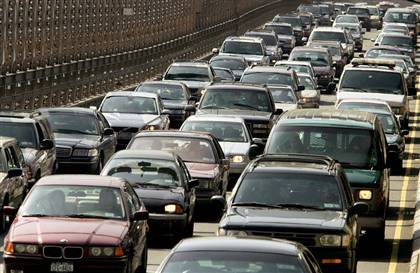Too many cars are the real culprits of traffic jams
 Washington, Mar 5: Every day traffic jams leave drivers bewildered as they finally reach the end of a tail-back to find no visible cause. Is it construction work that is creating chaos or an accident? No, just too much traffic, says a team led by Prof Yuki Sugiyama of Nagoya University, who has spent more than a decade puzzling over the problem.
Washington, Mar 5: Every day traffic jams leave drivers bewildered as they finally reach the end of a tail-back to find no visible cause. Is it construction work that is creating chaos or an accident? No, just too much traffic, says a team led by Prof Yuki Sugiyama of Nagoya University, who has spent more than a decade puzzling over the problem.
The study shows that how model patterns, normally used to understand the movement of many-particle systems, have been applied to real-life moving traffic.
Also it explains that even tiny fluctuations in car-road density cause a chain reaction, which can lead to a jam.
The research found that tiny fluctuations in speed, always existing when drivers want to keep appropriate headway space, have a cumulative effect.
Once traffic reaches a critical density, the cumulative effect of gentle braking rushes back over drivers like a wave and leads to a standstill.
In the study, the research team in Japan used a circular track with a circumference of 230m. They put 22 cars on the road and asked the drivers to go steadily at 30km/h around the track.
While the flow was initially free, the effect of a driver altering his speed reverberated around the track and led to brief standstills.
“Although the emerging jam in our experiment is small, its behaviour is not different from large ones on highways. When a large number of vehicles, beyond the road capacity, are successively injected into the road, the density exceeds the critical value and the free flow state becomes unstable,” said Yuki Sugiyama, physicist from Nagoya University.
The research suggests that it might be possible to estimate critical density of roads, making it possible to build roads fit for the number of drivers needing use of it or, on for example toll roads, only allowing the right number of cars access to the road to stop mid-flow traffic jams.
The study is published in the New Journal of Physics. (ANI)